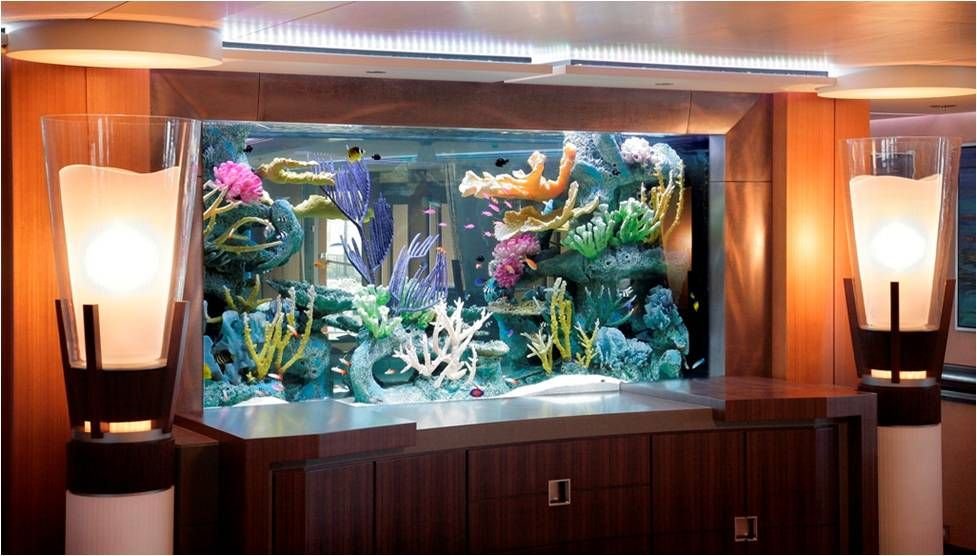There are so many benefits that come with adding an aquarium to your building, whether it translates to increased productivity, finer aesthetics, or even stress relief. But then, ordering just any type of aquarium could prove problematic, so it makes sense to understand what’s on the market, and what works best in conjunction with your surroundings. Aquarium tanks are available in a variety of different materials, most commonly glass and acrylic. Many believe that glass is a simpler solution, but it ultimately depends on the circumstances in your office. Acrylic aquariums have often been shown to be the wiser choice when it comes to design and installation due to their flexibility in a variety of situations.
What exactly gives acrylic an edge over the glass or other materials when ordering your new aquarium?
Aesthetics
Acrylic aquariums have the apparent advantage when it comes to style. They can achieve a more modern and sleek design that glass tanks can’t easily attain. Acrylic allows for a variety of colors, so the fabricator can easily set the tint to complement the building’s paint scheme. Even the most basic and simple configurations exude a luxurious quality. The acrylic is more malleable as well, so the shape of the tank can go beyond the standard glass box. If the workplace doesn’t have a theme or favor any particular aesthetic, adding an aquarium could be all you need. Regardless of your choice of shape, color, and overall tank design, this one feature can tie the whole office together.

Weight
Acrylic is a relatively lightweight material. If you desire an aquarium, acrylic expands your options when you work in a multilevel building. Similarly-sized glass tanks are heavier – weighing roughly twice as much as acrylic, so they are necessarily limited in size when installed on higher floors. Not only can the lighter acrylic tanks be offered in a broader range of shapes and sizes to suit most office buildings, but the ease of transportation, delivery, and installation is improved.
Stability
The majority of complaints that have surfaced regarding acrylic aquariums center around their susceptibility to scratches. However, those cosmetic issues are easy to repair. More importantly, it takes a significant amount of force to actually damage or break an acrylic tank. Conversely, glass tanks can’t sustain a substantial blow and are apt to shatter much more easily. Basic acrylic is at least two to three times more impact-resistant than the double strength window glass, and nine to ten times more resistant than the wired or other types of glass. Acrylic will be much more forgiving than glass. Simple scratches are trivial compared to the risk of a broken fish tank.
Aquariums have maintained their popularity over the years, with various health studies and technological advances both managing to contribute to their continued success. The growing fascination with bigger and increasingly elaborate aquariums is more suited to the wide-ranging acrylic properties and capabilities versus the limitations of glass. Offices can frequently accommodate larger acrylic installations which allow the vendors to exercise added creativity when designing unique aquariums, with a steady stream of onlookers to benefit from their charm.

